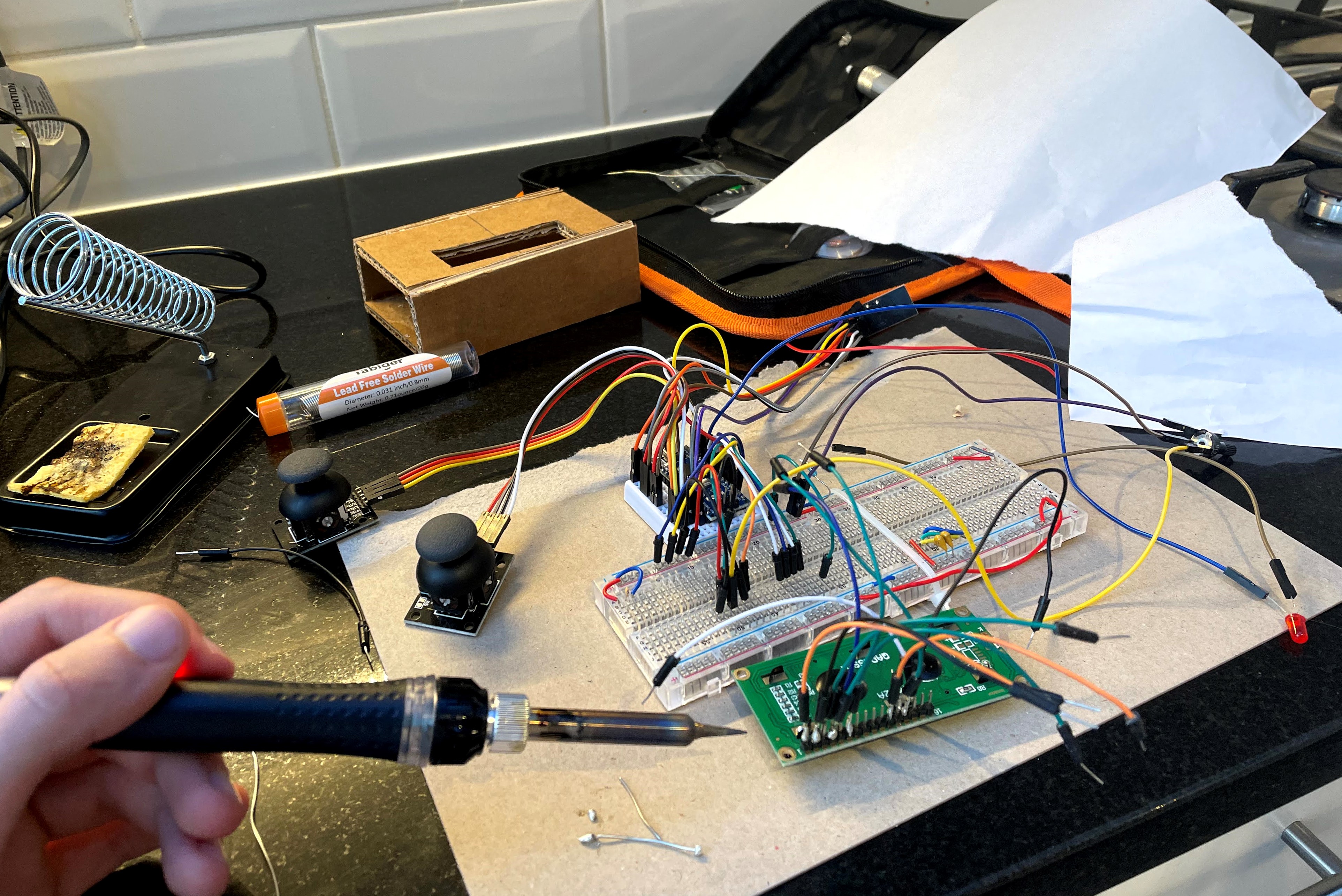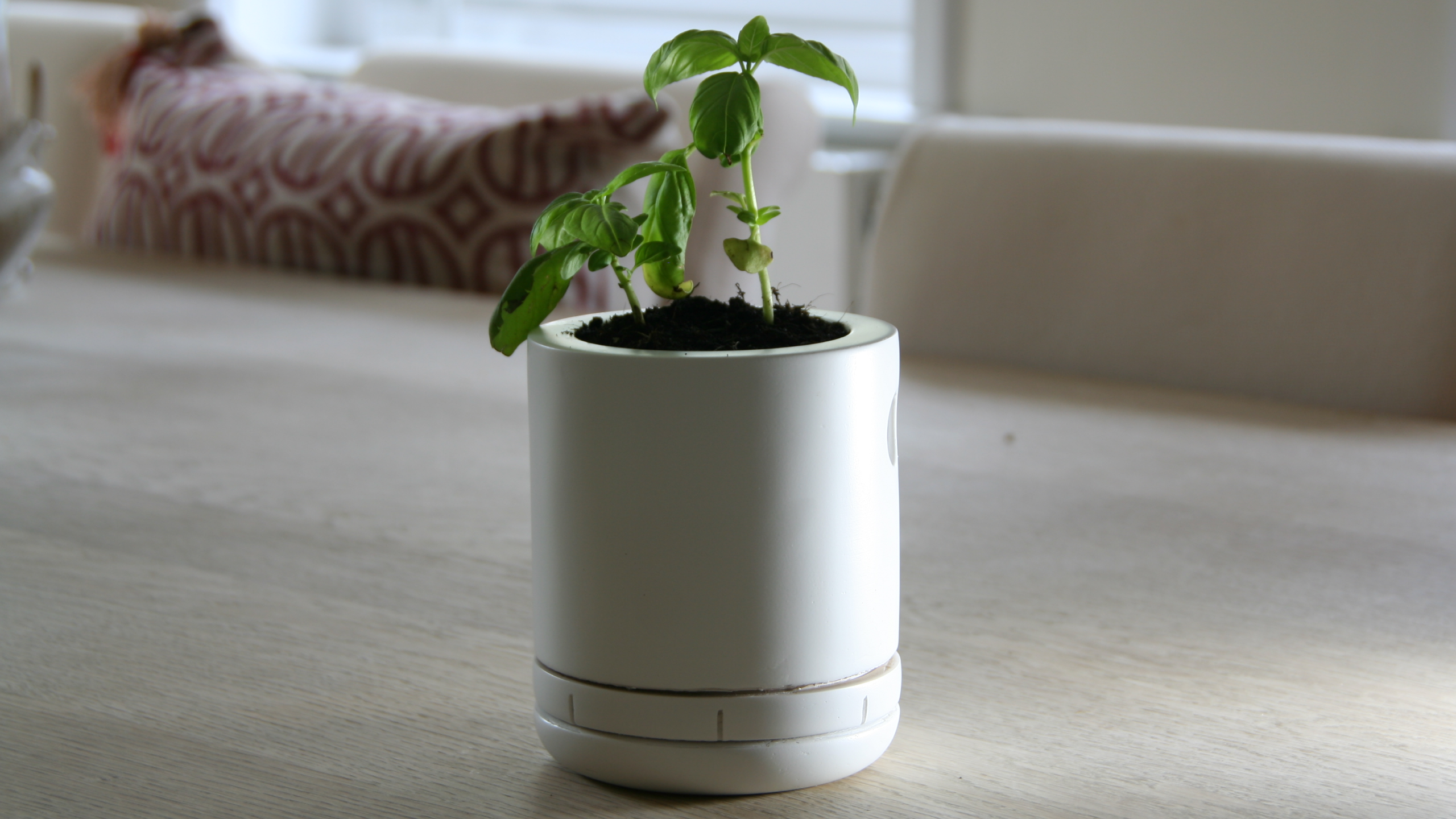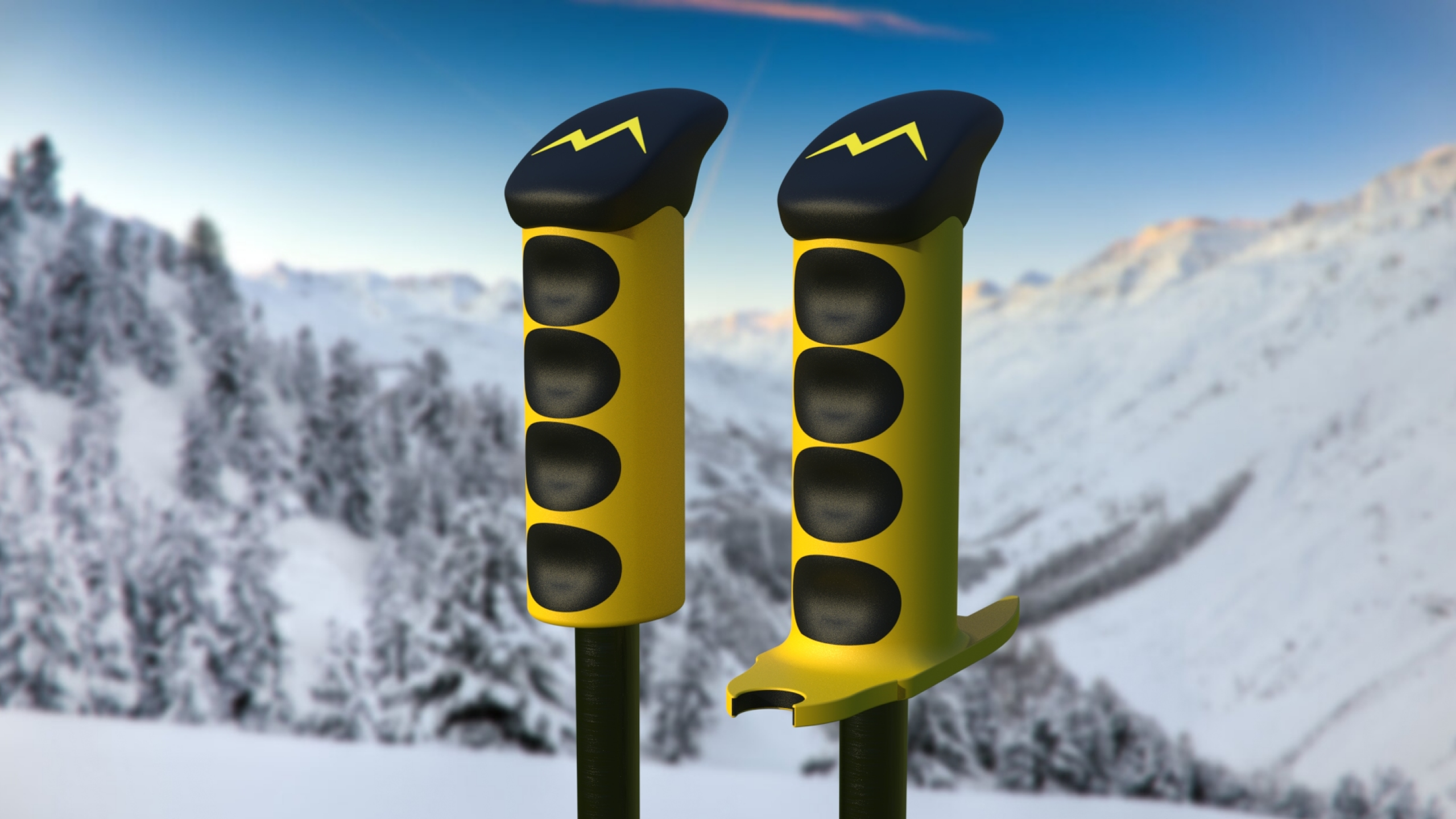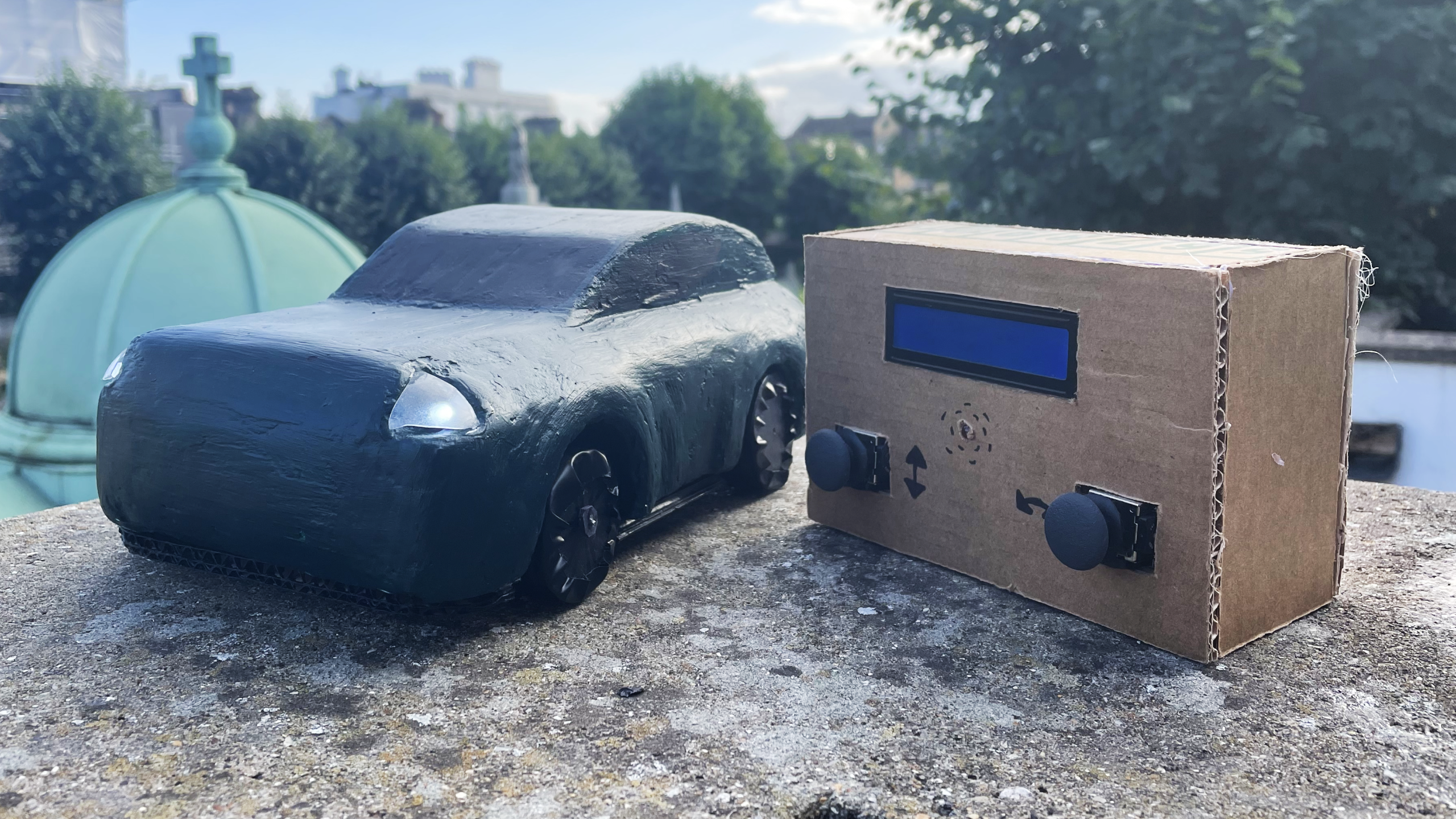Development Process
Various components like LEDs, RFID, joysticks, radio modules (for the remote control ability) and motors were tested, while planning the car's basic shape. Ultrasound components were used to sense the cars distance from objects such as wall. Experimentation with materials such as cardboard, wood, wire, and filler ensured a sturdy build. Single wall card was too flimsy to hold mass as seen so I found some double walled EB flute card so recycled this into my project. This was much stronger and easily held large masses. The DC motor was then tested on the chassis. Initially the height of the rear wheels were too close to the base of the card. This was modified by cutting partially into the chassis as seen in the photo, until there was enough clearance. The remote control was enhanced with an LCD display and speed indicator.
 Figure 1. Prototyping the product
Figure 1. Prototyping the product
Product Features
The final car was put together to show off a very realistic automotive appearance compared to most cardboard projects. It features the RFID in the door, the buzzer to warn the user when they are close to a wall, and the LEDs to indicate that the car in in drive mode. The constant interaction through playing the game and driving the car will entertain the user as well as the initial unlocking. The car is completely wireless to use as well as meeting all the points in the design specification.
The final remote comes in the form of a clean retro 'boxy' shape. It includes the LCD screen displaying the time taken from when the car moves away from a wall (more than 4cm) until it reverses back up against the wall. It also has the two joysticks for the DC motor as well as the servo steering. The red LED also constantly changes while in use depending on how fast the user is driving the car. It can be used with a 9V battery of plugged in via USB.
 Figure 1. Prototyping the product
Figure 1. Prototyping the product



